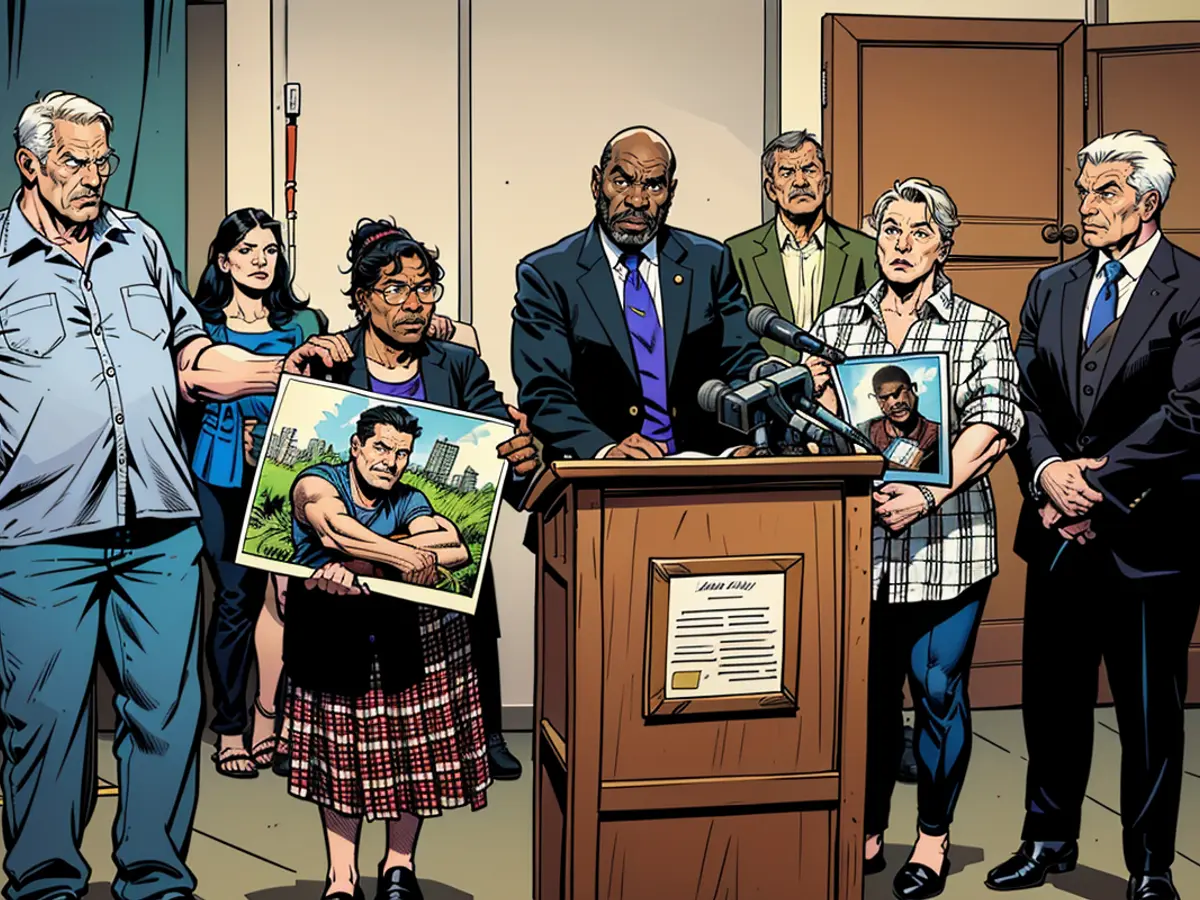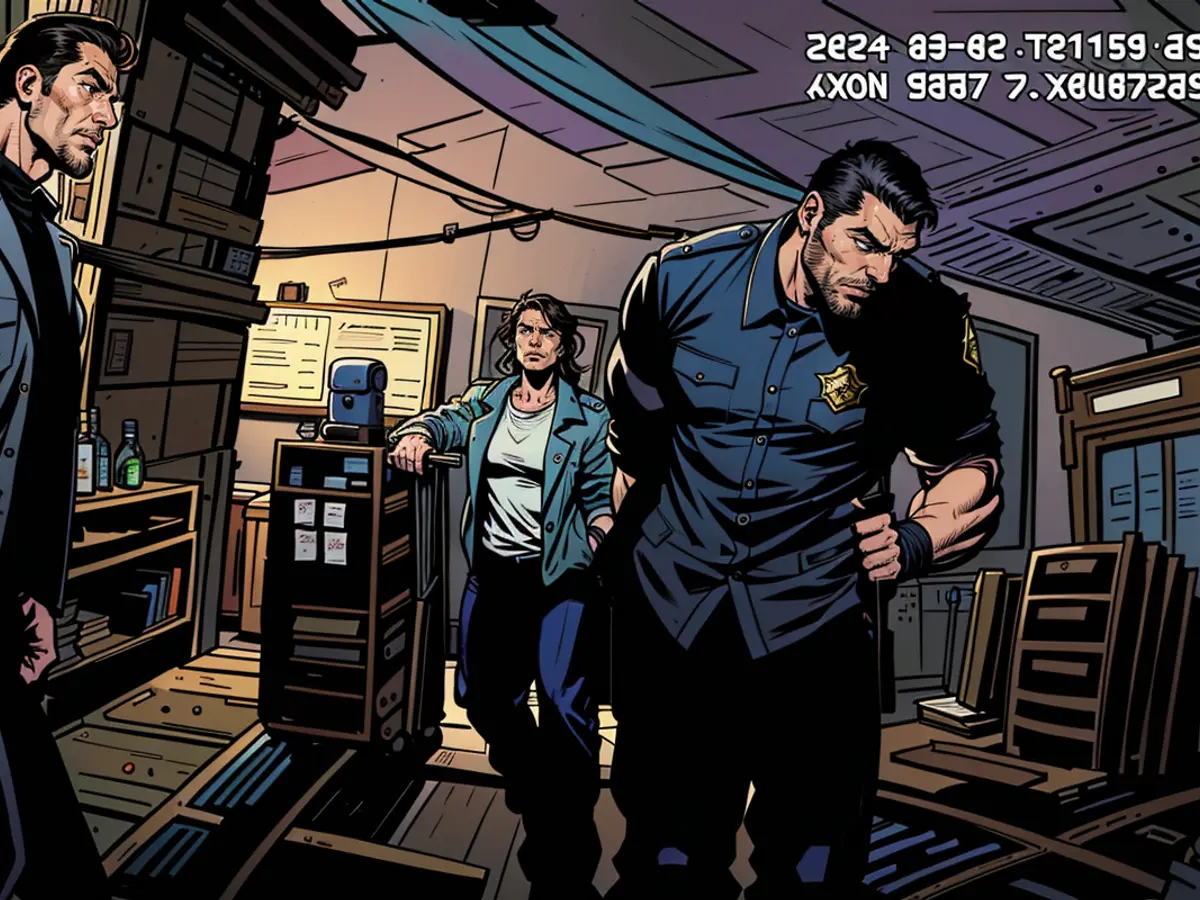"Check his heartbeat, it's turning blue": Video capture demonstrates tragic interaction between epileptic man from Indiana and emergency personnel
Frequently, they'd step in to assist due to his seizures: They'd help him get settled, offer him water or sports drinks, and in some instances, contact emergency services.
On September 8, following multiple seizures, his grandmother reached out to emergency services, requesting aid at his residence located near DeMotte, Indiana. However, whatinitially seemed like a routine interaction with Jasper County Sheriff's deputies and EMTs from Keener Township turned tragic.
The sheriff's department released bodycam footage on September 10, showcasing the deputies handcuffing him and keeping him pinned down for over 20 minutes as he pleaded for help and protested.
Family members could be heard urging him to remain calm and explaining to the deputies that the 26-year-old had recently suffered a seizure, leaving him confused.
The situation escalated when Earl was given shots of sedatives, causing him to lose consciousness. Within half an hour of their arrival, he stopped breathing, necessitating resuscitation. He was subsequently transported to a hospital and placed on life support, where he passed away two days later.
Investigations into Earl's death are being conducted by Indiana State Police, who declined to comment on the ongoing investigation. The Jasper County Sheriff's office authorized the release of the bodycam footage with state police's approval.
Results of Earl's autopsy and toxicology screening are yet to be disclosed, as his family's lawyers announced.
In a statement announcing the release of the video, Jasper County Sheriff's office explained:
"We are not drawing any conclusions about the actions of anyone involved in this incident. We believe it's crucial that our community receives all necessary information to independently evaluate the situation. Mr. Earl was in the midst of a medical emergency and displaying serious mental and physical resistance towards medical personnel on the scene. Our responsibility was to safeguard Mr. Earl from harming himself or the EMT personnel as they provided medical aid."
Earl's death rekindles the conversation surrounding fatal encounters between law enforcement and civilians, particularly in light of several recent unarmed Black men's deaths and the subsequent calls for police reform.
At a press conference last week, before the footage was released, civil rights attorney Ben Crump, representing Earl's family, vowed:
"To any client who dies in police custody, I pledge that we will pursue the truth behind the circumstances of their death."
Civil rights attorney Ben Crump promised justice on behalf of any client who dies in police custody, stating that it doesn't matter if the individual is Black or White, emphasizing that instances of "I can't breathe" and subsequent deaths in police custody warrant further scrutiny.
Connie Widner, Earl's grandmother, expressed regret for dialing emergency services, believing they ultimately failed to help her grandson.
"This incident began when Earl had a seizure at his sister's house. Paramedics were called, with some of them eventually arriving at his home that evening. The deputies didn't face any issues that day," Widner shared during a press conference last week.
Widner revealed that Earl suffered two more seizures after he returned home and decided to call emergency services again. Bodycam footage shows a deputy intervening, wrestling Earl to the ground, and placing him in handcuffs for what appeared to be minor resistance.
The video does not provide clear context for the deputy's actions. EMTs discussed administering sedatives, as the shots did not seem to have any effect.
As the struggle with the first responders continued, the family members pleaded with the officers to stop and provide medical aid to Earl.
Moments later, Earl became unresponsive, and the family members called for help, with Miracle Gawlinski, Earl's aunt, urging the EMTs to take her nephew's pulse.

The situation immediately escalated as concerns arose regarding the potential use of illicit substances, with the EMTs discussing administering ketamine. Despite this, they did not receive approval from the hospital before proceeding, leaving Earl's family in the dark regarding the medication given to him.
Forty-five minutes later, EMTs confirmed Earl had no pulse and started resuscitation procedures. He was subsequently transported to a hospital and placed on life support, ultimately succumbing to his injuries two days later.
In a family statement issued after the release of the bodycam footage, Earl's family expressed their desire for transparency and a thorough investigation into his tragic death.
"We are sharing this footage as part of our pursuit for justice and answers, but it brings us no joy to witness our loved one’s final moments. Despite the heartbreaking videos and the countless pain we suffer, we will continue to pray for Earl’s memory and for truth to prevail," the family statement read.
Video evidence displays first responders attempting to revive Earl for over 10 minutes. In a communique, the Jasper County Sheriff’s Department announced that Earl became unresponsive, was transported to the hospital, and subsequently passed away. The communique did not delve into the potential administration of relaxants.
The sheriff’s communiqué also accused Earl’s family’s attorney of propagating "vile fabrications about our deputies' actions."
During a previous press conference, Crump and his associate counsel, Stephen Wagner, suggested that deputies behaved inappropriately towards an individual in a "post-convulsion" state and applied "disproportionate force."
"Until first responders grasp that you don't treat a seizure patient or an autistic patient or someone experiencing a mental health crisis as a criminal, until they grasp this and respond appropriately, there will be more such press conferences," Wagner stated.
A "post-convulsion" state
Convulsions arise from an abrupt, uncontrolled electrical surge in the brain, as per the Mayo Clinic.
Following a convulsion, an individual might experience symptoms such as bewilderment, fatigue, apprehension, and exasperation. This phase is referred to as the "post-convulsive" phase, and, according to the Mayo Clinic, recovery may take several hours for some.
In 2023, the Epilepsy Foundation’s Jeanne A. Carpenter Epilepsy Legal Defense Fund collaborated with the Morehouse College of Medicine to educate law enforcement officials on how to handle a person who has recently suffered a convulsion.
"This sort of training for law enforcement and first responders should be standard practice," said Allison Nichol, the Fund's senior director of legal advocacy.
Unfortunately, Nichol could not provide insights into the Earl situation, but she did confirm that "law enforcement can and frequently misinterpret what they observe as excessive substance usage or alcohol intoxication – which is common during emergencies. They often fail to consider the possibility that this person is in a post-convulsive state."
Nichol stated that she gets numerous calls every week from legal professionals and individuals with epilepsy who have experienced "unfavorable interactions" with law enforcement after a convulsion.
"Even knowing that a person has epilepsy or is having a convulsion does not guarantee a fitting response to the situation. That really necessitates some training," she concluded.
For the Earl family, seeking justice for Rhyker commences with preventing incidents like this from recurring.
"He was always lying flat on his stomach, pleading for help, but there was nothing we could do," Widner lamented. "And we don’t want this to happen to someone else, because if it happened to us, it will happen to anyone."

The family members continued to urge the deputies to provide medical aid, explaining that Earl was in a post-seizure state. Despite this, the situation escalated further.
Regretfully, Connie Widner, Earl's grandmother, feels that their call to emergency services may have ultimately led to Earl's tragic demise, as they considered the response as less than helpful.








